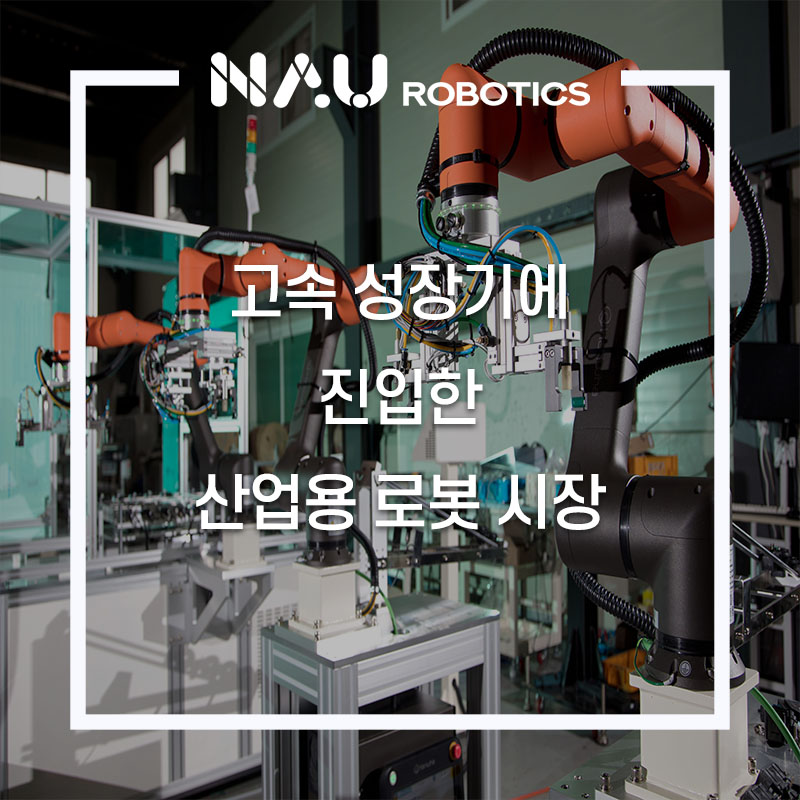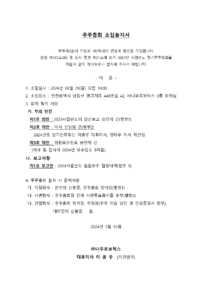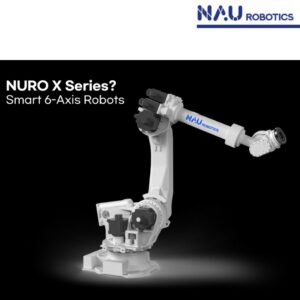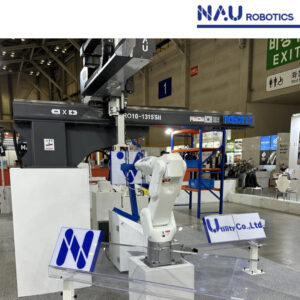안녕하세요. 나우로보틱스 블로그 지기, 나우지기 입니다. 로봇에 대한 도입이 갈수록 많아지고 확산되면서 로봇 시장에 대한 주목도 갈수록 높아지고 있는데요, 지난 5년여간 산업용 로봇 시장은 성장과 약세를 반복하다가 코로나를 기점으로 지난해에 특히 급속도로 성장하였습니다.
앞으로 향후 5년간도 산업용 로봇 시장은 크게 성장할 것으로 예상을 하고 있는데요, 최근 한 외신 기사에 따르면 산업용 로봇 시장은 이제 고속 성장기에 들어섰다고 평가했습니다. 과연 이 기사에서는 왜 시장이 고속 성장을 시작했다고 평가했을지 오늘 한편의 외신 기사를 통해 산업용 로봇 시장을 여러분들에게 소개해 볼까 합니다.

Industrial Robots Have Moved From Maturity Into A Fast-Growth Phase
산업용 로봇 시장이 성숙기에서 고속 성장기로 진입했다
The past five years have been a roller-coaster ride for the industrial robot market. A market decline in 2019 was followed by disruption in 2020, a record high in 2021, and we now see a long-term positive growth forecast. In fact, it could be said that the industrial robot market has, as a result of COVID, done something highly unusual – it has moved from a mature and conservative phase into an exciting, fast-growth, almost start-up-like phase.
지난 5년간 산업용 로봇 시장은 롤러코스터를 탔다. 2019년에 시장 감소에 이어 2020년에는 혼란이 이어졌으나 2021년 사상 최대치를 기록했으며, 현재 장기적인 전망에 따르면 플러스 성장이 이어질 것으로 보고 있다. 사실, 산업용 로봇 시장은 코로나로 인해 매우 이례적인 상황을 겪었는데 성숙기를 지나 더욱 빠르게 성장하는 단계로 진입했으며 이는 거의 스타트업과 흡사하다.
That said, in the short-term, though industrial robots have received a COVID-boost, they are also susceptible to the same post-COVID challenges as all industries.
즉 다시 말해, 산업용 로봇이 단기적으로 봤을땐 코로나로 인한 수혜를 입었지만, 장기적으로 봤을땐 모든 산업과 동일하게 코로나 이후 상황에 대한 우려가 있다.

2017-2021 – A story of peaks and troughs
2017~2021년 고점과 저점
2017 was a good year for the industrial robot sector, with revenues increasing by 20%. But bad times were just round the corner. From 2018 onwards, weak consumer demand in the automotive sector (by far the biggest consumer of industrial robot technology), a poorly performing electronics market – notably smartphones, a tough machine builders’ market and ongoing trade wars resulted in a steep decline in revenues. And then the pandemic hit.
2017년엔 산업용 로봇 분야의 수익이 20% 증가했다. 하지만 곧바로 좋지 않은 시기가 이어졌다. 2018년부터 자동차 부문(산업용 로봇 기술의 가장 큰 소비자), 스마트폰과 같은 전자제품 시장이 저조해졌고, 특히 기계 제조기업들이 계속됐던 무역전쟁으로 인해 소비자 수요 약화로 이어져 수익이 급격하게 나빠졌다. 그리고 팬데믹이 강타했다.
In the two-year period 2019-2020, revenues shrank by 10%. These losses mainly resulted from the poor performance of the automotive industry and the global macro-economic environment, and were not offset by increasing demand from the new energy automotive sector. If the market cycle had followed its expected pattern, 2020 would have seen the industry rebound. However, covid broke that cycle and completely disrupted the rhythm of recovery due to enforced slow-downs and closures of warehouses and factories.
2019-2020년 2년 동안 수익이 10% 감소했다. 이러한 손실은 주로 자동차 산업과 글로벌 거시경제 환경의 저조한 실적에서 비롯됐으며, 신재생 에너지 자동차 부문의 수요가 있었지만 그것으로는 역부족이었다. 시장 사이클이 예상한 패턴을 따랐다면 2020년에는 업계가 반등했을 것이다. 그러나 코로나로 인해 창고와 공장의 감소와 폐쇄로 인해 시장 회복의 리듬이 완전히 흐트러졌다.
But the 2020 trough was followed by a 2021 peak, when shipments saw a year-on-year increase of 31.9%. This remarkable growth was partly just a 2020 rebound, but pandemic-induced enthusiasm among manufacturers for automation solutions as a way to mitigate ongoing manpower shortages and shut-downs meant the market exceeded its 2019 level.
그러나 2020년의 어두운 시기를 지나 2021년에는 최고치를 달성했는데, 이때 산업용 로봇의 출하량은 전년 대비 31.9% 증가했다. 이 놀라운 성장세가 2020년의 부분적 반등에 불과했지만 계속되는 인력부족과 셧다운 사태를 해소하기 위한 방법으로 자동화 솔루션에 대한 제조기업들의 수요와 관심이 2019년을 넘어섰다는 의미였다.

A re-energised market facing multiple challenges
여러 과제에 직면한 재활성화된 시장
Repeated waves of COVID are continuing to disrupt machinery production in Asia, where China accounted for 52.5% of global industrial robot shipments in 2021. These recurring COVID outbreaks are causing disruption to the supply chains feeding robot manufacturers. Other major issues around shipping capacity and pricing and sharp fluctuations in raw material prices are also hitting supply lines. Order books for industrial robots may be full, but if the parts aren’t on the shelves, production lags behind demand and lead times rocket.
2021년 전 세계 산업용 로봇 출하량 중 중국이 52.5%를 차지한 가운데, 아시아 지역에서 생산 차질을 빚고 있는 이유는 코로나 사태 반복 때문이다. 이러한 반복적인 코로나 사태는 로봇 제조업체에 있어 꼭 필요한 공급망에 혼란을 초래하고 있다. 여기에 선적능력과 가격, 원자재 가격의 급격한 변동과 관련된 다른 주요 이슈들도 공급 라인에 타격을 주고 있다. 산업용 로봇을 위한 주문은 넘쳐났지만, 부품이 선반에 있지 않으면 생산량이 수요에 비해 뒤처지고 리드 타임이 급증한다.
The Russia-Ukraine conflict has also impacted on the robot market especially EU, as energy prices, which were already rising, have hit record levels. The war is also causing currency instability across the globe, hitting exchange rates which heavily impacts foreign trade. In this unstable atmosphere, decision-making RE investment has become a hesitant process for all manufacturers, and particularly so for end-users of industrial robot solutions, because industrial robots tend to be highly expensive.
러시아-우크라이나 전쟁은 이미 그 전부터 상승하고 있던 에너지 가격을 기록적인 수준으로 올린 것은 물론 로봇 시장, 특히 EU에도 영향을 미쳤다. 이 전쟁은 또한 전 세계적으로 환율에 타격을 입히면서 통화 불안을 야기하고 있으며, 이는 외국 무역에 큰 영향을 미치고 있다. 이러한 불안정한 분위기에서, 산업용 로봇은 매우 비싼 경향이 있기 때문에, 모든 제조업체, 특히 산업용 로봇 솔루션의 최종 사용자들에게 의사 결정 재투자는 망설이는 과정이 되었다.
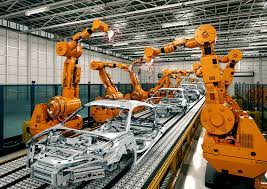
Robot prices will decline at a much slower rate than we have been used to
로봇 가격은 우리가 익숙했던 것보다 훨씬 더 느린 속도로 하락할 것
The pressures described above, combined with increased demand, naturally have a big impact on industrial robot pricing. We’d already seen price increases in 2021 in the Americas and EMEA markets, and they began to appear in APAC markets earlier this year too.
위에 기술한 여러 압력들은 수요 증가와 함께 자연스럽게 산업용 로봇 가격에 큰 영향을 미친다. 우리는 이미 2021년에 미국과 EMEA 시장에서 가격 상승을 보였고, 올해 초 APAC 시장에도 등장하기 시작했다.
Even local Chinese vendors who are more sensitive to pricing are following this upward pricing trend due to pressures in the supply chain. Upstream from robot manufacturers, it’s become very much a sellers’ market for suppliers of key components to the robot industry, such as reducers, servos, controls, and sensors. The performance of leading component manufacturers is very strong and, while demand outstrips supply, they hold the whip-hand where pricing is concerned.
가격에 더 민감한 중국 현지 업체들도 공급망 압박에 따라 가격 상승 추세를 이어가고 있다. 로봇 제조업체에서 업스트림, 리듀서, 서보, 제어 장치 및 센서와 같은 로봇 산업에 대한 주요 구성 요소의 공급자를 위한 판매자 시장이 됐다. 선도적인 부품 제조업체들의 실적은 매우 강하며, 수요가 공급을 앞지르지만, 가격 문제에 있어서는 그들이 주도권을 쥐고 있다.
This will inevitably force up prices of finished industrial robot products. But we see it as essentially a short-term phenomenon with price increases soon to be followed by average like-for-like price declines of the order of 2-3% per year over the next 5 years. These reductions will be moderate compared to what we have been used to, partly because of the increased sales of larger payload models which come at a higher cost.
이렇게 지속되면 산업용 로봇 완제품 가격이 오를 수밖에 없다. 그러나 우리는 이것을 단기적인 현상으로 전망하며, 곧 가격 인상이 이어지겠지만 향후 5년간에는 연평균 2~3%의 가격 하락이 뒤따를 것으로 보고 있다. 이러한 감소는 우리가 익숙했던 것에 비해 중간 정도일 것이며, 부분적으로는 더 높은 비용이 드는 더 큰 수익 모델과 판매가 증가했기 때문이다.
Medium-term optimism: 10% year-on-year growth expected out to 2026
중기 낙관론: 2026년까지 전년 대비 10% 성장 예상
The COVID-19 pandemic and the subsequent labour shortages and rising wage costs have turbo-charged factory automation across a whole swathe of industrial sectors. It’s widely recognised that automation future-proofs enterprises against future crises and increases levels of efficiency and productivity, and with that, profitability. Notwithstanding the current stresses in the industrial robot market, there is strong optimism for the future.
코로나 대유행과 그에 따른 노동력 부족과 임금 비용 상승은 모든 산업에 공장 자동화를 촉진시켰다. 자동화는 기업이 미래의 위기에 대비하고 효율성과 생산성 수준을 향상시키며, 이를 통해 수익성을 높일 수 있다는 것이 널리 알려져 있습니다. 현재 산업용 로봇 시장에 대한 악조건들은 있지만 미래에 대한 낙관론이 강하다.
We anticipate overall 10% year-on-year growth in the robotics market up to 2026, when global sales are expected to exceed 770,000 units. Continued increases in the costs of labor, the ongoing decline in robot pricing, the trend away from mass production to semi-customized production, the demand for shorter and faster product cycles, and the drive to further increase efficiency and product quality, will all further drive robot adoption. The future for the industrial robot industry looks secure for one simple reason: robots increase productivity. And, as the famous saying goes: “Productivity isn’t everything, but in the long-run it is almost everything.”
전 세계 판매량이 77만대를 넘어설 것으로 예상되는 2026년까지 로봇 시장은 전년대비 전체 10%의 성장세를 보일 것으로 전망하고 있다. 인건비의 지속적인 증가, 로봇 가격의 지속적인 하락, 대량 생산에서 준맞춤형 생산으로 전환되는 추세, 더 짧고 빠른 제품 주기에 대한 요구, 그리고 효율성과 제품 품질을 더 높이려는 추진력은 모두 로봇 도입을 더욱 가속화 시킬 것이다. 산업용 로봇 산업의 미래는 간단하게 한 마디로 말해서 ‘생산성을 증가시킨다’고 말할 수 있다. 그리고 유명한 속담이 있듯이, “생산성이 전부는 아니지만, 장기적으로 보면 거의 모든 것이다.”

